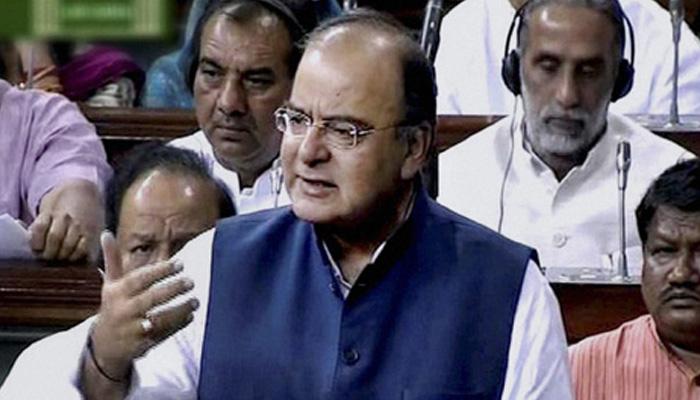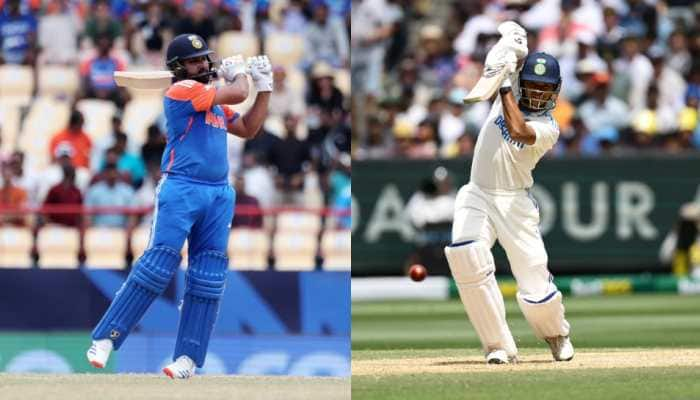Budget 2016: Will it meet people's aspirations?
Trending Photos
)
Amit Dasgupta/IANS
Ever since then finance minister Shan Mukhan Chitty presented India's first budget in 1947, the event has been eagerly awaited as the first big-ticket political event of the year. Consequently it should come as no surprise that even a fortnight after Arun Jaitley presented the budget for 2016-17, commentaries continue as to whether this was finally the long-awaited budget or whether it was devoid of the much-needed big bang vision.
This oscillation between applause and disappointment is equally understandable, as it reflects perceptions of how realistic the government's aspirations are and whether it would achieve its stated objectives. This is because a budget is essentially a statement by the government of what its
priorities are for the year. The budget document is, in other words, an allocation of funds and the sectors for which allocations have been made. Allocations are not, however, a sanction for expenditure.
Expenditure is incurred on the basis of prescribed administrative and financial procedures that need to pass audit scrutiny, failing which it becomes an audit objection and in the worse-case scenario, feature in the Comptroller and Auditor General's report, which is presented to parliament. To that extent, actual expenditure incurred usually falls below allocations because of reticence in giving approvals.
Fear of reprisals after change of government or investigations by vigilance on the basis of complaints of misappropriation of funds can be a significantly demotivating factor for bureaucrats in approving proposals. Delays become the norm. Consequently, at the Revised Estimates stage, progressive expenditure statements and the ability to spend determine fund allocations and tend to be substantially lower than the Budget Estimates.
This is the real challenge that governments face. In short, will the central government spending for the financial year utilize the allocations or will funds lapse, as has been the case on innumerable occasions in the past with successive governments? Utilization and thus, implementation will be the
litmus test of the government's resolve in matching its aspirations with achievement. Shortfall will attract criticism that the government falsely raised expectations.
To that extent, all budgets face the critical challenge of implementation. Consider some allocations in the 2016 budget, for instance. Under the Accelerated Irrigation Benefit Program [AIBP], Jaitley said that there were 89 pending projects and their completion would require Rs.17,000 crore next year and Rs.86,500 crore in the next five years. In parliament, he conveyed the government's commitment in ensuring 23 projects would be completed before the end of the financial year.
It bears recalling that the majority of these projects have been languishing for years. What miracle wand will now see fast-tracking and thus, completion? Indeed, the genuine fear is that incurring expenditure would be confused with project completion when in reality it would only push open the door to corruption even wider. Ensuring that the allocations go to the intended beneficiaries within the stipulated time frame will be the biggest challenge the central government would face.
Similarly, Prime Minister Narendra Modi's pledge to double the income of farmers by 2022 was rejected by his predecessor, Manmohan Singh, as being an impossible dream despite it being a big idea.
Indeed, Modi himself indicated that the goal would be achieved only if the state governments gave priority to agriculture. As the history of India's centre-state relations has repeatedly demonstrated, this is an uneasy relationship where state governments that are in opposition to the central government and rarely sing the same tune. Consequently, the sole big idea might fall by the wayside, as its success is entirely dependent on the proactive manner in which state governments take interest in the rural sector and in agriculture.
Consider the ease of doing business. At a talk recently delivered at the Mumbai campus of the SP Jain School of Global Management, the response of Mark Thirwell, Chief Economist with Austrade, in response to a query on how India was perceived by Australian companies, is worth recalling.
He said when Australian companies were asked to identify the top five exciting destinations in the world for investment, India would invariably feature. At the same time, if Australian companies operating abroad were asked which they felt were the top five most difficult places to do business, India would invariably feature! In other words, India represents a clear mismatch between expectation and delivery. The importance of addressing how important it is to improve conditions for doing business in India cannot be over-emphasized.
The government has announced the ease of doing business as among its top priorities. For this, a number of amendments to the Companies Act are required but can only be achieved with the approval of parliament. Experience suggests that this is not likely to be an easy task given the manner in which parliamentary proceedings have been stalled over the past several months and the passage of important bills, especially GST. It is, however, good news that the opposition has agreed to the passage of some of the bills.
The government's commitment on fiscal consolidation is also excellent news. All this impacts the way in which India is perceived by foreign investors.
Two important challenges confront all governments: first, the ability to spend allocations and ensure that the funds reach the intended beneficiaries and second, to see the budgetary exercise as being in conjunction with a series of other enabling executive actions.
For transformative change to take place in the Indian economy, tough economic reforms are required. A pro-poor budget does not work without an economic liberalization programme that attracts domestic and foreign investment coupled with expenditure in the social sector.
Simultaneously, the government needs to visibly demonstrate political will in tackling corruption at all levels, especially the connivance between local politicians, law enforcers, contractors and the multiple gatekeepers who thrive on speed money. Unless corruption is addressed, investors would not back the India story.
A dream budget is one that can be implemented. At the end of the day, a budget and its implementation need to be seen as setting the tone for inclusive growth in a country where the Mars mission and farmer suicides are a grim reality and take place simultaneously. Unless this is a collective end-objective, India will again represent the inability to deliver on aspirations. Yet again, the people would have lost.
Stay informed on all the latest news, real-time breaking news updates, and follow all the important headlines in india news and world News on Zee News.
Live Tv







)
)
)
)
)
)
)
)
)
)
